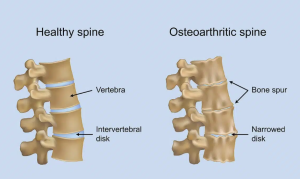In a bidirectional two-sample Mendelian randomization and transcriptomic analysis Lin et al. from the Xiangya Hospital, Changsha published in the Journal of Pain Research to investigate the causal relationship between circulating inflammatory proteins and osteoarthritis (OA) using Mendelian randomization and transcriptomic data. The study suggests causal roles for various inflammatory proteins in osteoarthritis pathogenesis. Certain proteins (e.g., interleukin-8, fractalkine) are associated with higher OA risk, while others (e.g., interleukin-10 receptor subunit alpha) correlate with lower risk. Additionally, OA itself may causally influence inflammatory protein levels, particularly in a joint-specific manner (hip vs knee). Six key OA-related inflammation-related genes (IRGs) were identified as potential biomarkers 2).
Critical Review:
This study leverages the strengths of two-sample Mendelian Randomization (MR) to address directionality in inflammation-OA associations, bolstered by transcriptomic analysis. However, several issues warrant scrutiny:
– Causality overreach: While MR reduces confounding, it still relies on assumptions (e.g., no pleiotropy), which are not exhaustively addressed here. The evidence remains “suggestive” rather than definitive.
– Protein-level resolution: Using summary GWAS data for circulating proteins imposes a limit on biological granularity. There’s no validation through proteomic assays or replication in independent cohorts.
– Transcriptomic correlation does not imply function: Identifying differentially expressed genes does not establish them as pathologically relevant without mechanistic data.
– Statistical multiple-testing: Given the number of proteins and genes tested, the absence of a clear correction method or false discovery rate control weakens confidence in individual associations.
– Clinical relevance: The clinical applicability remains speculative; no risk stratification models or therapeutic implications are drawn from the biomarkers.
Final Verdict: A conceptually valuable study with well-executed bioinformatics and MR methodology, yet weakened by overinterpretation, limited functional validation, and uncertain translational impact.
Takeaway for Neurosurgeons: While the findings are not directly actionable, the study underscores the growing relevance of systemic inflammation in joint pathology—potentially informing holistic care in spine patients with concurrent OA.
Bottom Line: A hypothesis-generating MR study suggesting bidirectional causal links between inflammatory proteins and OA, but lacking translational depth.
Rating: 5.5 / 10
Lin S, Wu C, Pan Y. The Causal Effects Between Circulating Inflammatory Proteins and Osteoarthritis: A Mendelian Randomization and Transcriptomic Analysis. J Pain Res. 2025 Jul 4;18:3383-3402. doi: 10.2147/JPR.S523677. PMID: 40630929; PMCID: PMC12236367.
